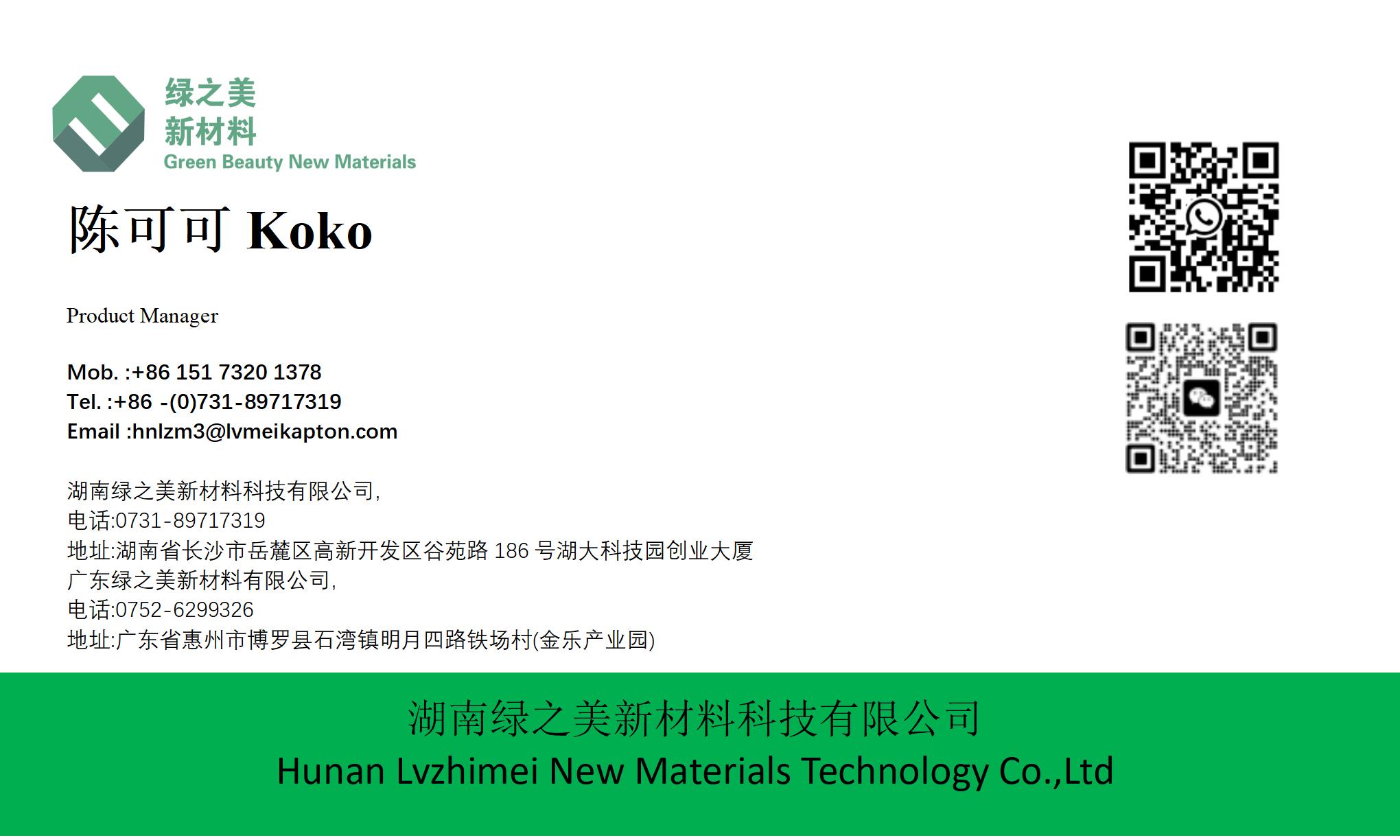



Who Benefits Most from Gold Finger Electronics Polyimide Tape Kapton in High-Tech Industries?
Tape Type | Max Continuous Temp (°C) | Min Operating Temp (°C) | Ideal Applications |
PI Material High Temperature Resistant 300 Tape | 300 | -269 | Engine control units, industrial ovens |
Adhesive PET Material High Temperature Tape | 150 | -70 | Consumer electronics, LED lighting |
Lvmeikapton Insulating Electrical Tape | 260 | -200 | Aerospace wiring, cryogenic sensors |
High Surface Energy (≥40 dynes/cm): Metals (copper, aluminum), glass, ceramics→ Use acrylic adhesives (e.g., "Self-adhesive back blocking spray paint tape") for maximum initial tack.
Low Surface Energy (≤30 dynes/cm): PTFE, polypropylene, silicone→ Require silicone adhesives or primer-coated tapes (e.g., "Lvmeikapton insulating tape" with primer layer).
Substrate | Recommended Tape Type | Adhesive Type | Peel Strength (N/cm) |
Gold-plated PCB | Brown Circuit Board High Temperature Tape | Polyimide-based | 8-10 |
Flexible FPC | Thin PI Film Tape (12-25 microns) | Silicone adhesive | 6-8 |
Aluminum Alloy | Adhesive PET Material High Temp Tape | Acrylic adhesive | 10-12 |
Low Voltage (≤100V): Standard polyimide tape (40 kV/mm) suffices for wire insulation.
High Voltage (≥500V): Opt for "Lvmeikapton insulating electrical tape" (50 kV/mm) with thicker film (50 microns+) to prevent breakdown.
Vibration/Shock: Prioritize high tensile strength (≥150 MPa) and tear resistance (≥30 N/mm), e.g., "Strong adhesion blocking high temp tape" used in military ruggedized computers.
Conformability: For curved surfaces (e.g., MEMS sensors), choose ultra-thin tapes (12-25 microns) with ≤5% thickness variation.
Solvents (acetone, MEK): Silicone-adhesive tapes (e.g., "PI material high temp 300 tape") outperform acrylics, which dissolve within hours.
Humidity/Salt Spray: Look for tapes with hydrophobic coatings; the "Brown circuit board tape" passed 1,000 hours of salt spray testing with <5% corrosion under the tape edge.
Outdoor Applications: Select UV-stabilized tapes (e.g., "Adhesive PET material high temp tape" with UV additive), proven to last 10+ years in QUV testing.
Nuclear/Radiation Environments: Only polyimide tape kapton withstands >10^6 Gy, making it mandatory for reactor monitoring systems.
Key Features: 25-micron polyimide film, silicone adhesive, UL 510 V-0 rating
Best For: Masking gold fingers during wave soldering (260°C peak), preventing solder bridging on 0.3mm-wide contacts
Avoid: Use on low-surface-energy plastics; requires surface cleaning with isopropyl alcohol first
Key Features: 12-micron ultra-thin film, acrylic adhesive with low outgassing
Best For: Precision masking in conformal coating and spray painting, leaving no residue on delicate components
Case Study: A smartphone manufacturer used this tape to protect camera module contacts during IP68 waterproofing treatment, achieving 99.9% yield.
Key Features: 50-micron film, crosslinked silicone adhesive, NASA low outgassing certified
Best For: Engine bay wiring in automotive (150°C continuous), EV battery cell insulation, and aerospace harnesses
Technical Edge: Maintains 85% adhesive strength after 5,000 thermal cycles (-40°C to +250°C), vs. 50% for PET alternatives.
Key Features: 75-micron film, polyimide adhesive, dielectric strength 45 kV/mm
Best For: High-voltage applications (800V+ EV batteries, industrial transformers), offering dual insulation and mechanical protection
Test Data: Passed 1,000 hours of high-voltage aging (1,000V DC) with zero leakage current, unlike PVC tapes which failed after 100 hours.
Key Features: 25-micron PET film, acrylic adhesive, cost-effective for moderate temps
Best For: Consumer electronics (laptops, tablets), LED heat sinks, and general PCB component securing (≤150°C)
Limitations: Not recommended for long-term use above 130°C; adhesive may yellow after 500 hours.
Key Features: 100-micron reinforced polyimide, high-tack silicone adhesive
Best For: Heavy-duty applications with high mechanical stress (industrial machinery, wind turbine connectors), resisting 20G vibrations
Unique Selling Point: Features a anti-blocking coating to prevent rolls from sticking during storage in humid environments.
Application | Temperature Range | Key Requirement | Recommended Tape |
Engine Control Unit (ECU) | 125-150°C | Vibration resistance | PI Material High Temp 300 Tape |
Battery Management System | 80-120°C | Chemical resistance | Lvmeikapton Insulating Tape |
Interior Wiring Harness | 60-80°C | Cost-effective | Adhesive PET Material High Temp Tape |
Application | Temperature Range | Key Requirement | Recommended Tape |
Avionics Cables | -55°C to +125°C | Radiation resistance | Lvmeikapton Insulating Tape |
Satellite PCBs | -200°C to +200°C | Low outgassing | Brown Circuit Board High Temp Tape |
Ruggedized Military Devices | -40°C to +85°C | Mechanical robustness | Strong Adhesion Blocking High Temp Tape |
Application | Temperature Range | Key Requirement | Recommended Tape |
Wireless Earbuds | 25-60°C | Miniaturization | Self-Adhesive Back Blocking Tape |
Laptop Motherboards | 50-100°C | No-residue removal | Thin PI Film Tape (12 microns) |
Smartwatch Batteries | 0-50°C | Conformability | Adhesive PET Material High Temp Tape |
Thermal conductivity (W/m·K): Critical for heat dissipation in power electronics (polyimide: 0.15 vs. PET: 0.22)
Outgassing properties (TML/CVCM): Mandatory for space applications (NASA requires TML ≤1.0%)
Peel strength after aging: Look for data at your target temperature (e.g., 200°C for 1,000 hours)
Sample Testing: Always test tapes under real-world conditions (e.g., thermal cycling, chemical exposure) before full-scale adoption.
ASTM Standards: Use ASTM D3330 for peel strength, ASTM D638 for tensile strength, and ASTM D149 for dielectric strength.
Die-cutting to precise geometries for gold finger masking
Adhesive formulation tweaks for unique substrates
Regulatory compliance support (e.g., helping meet IPC-4555 for PCB tapes)
CAD models of components
Real-time environmental data from IoT sensors
Historical failure data from similar applications






